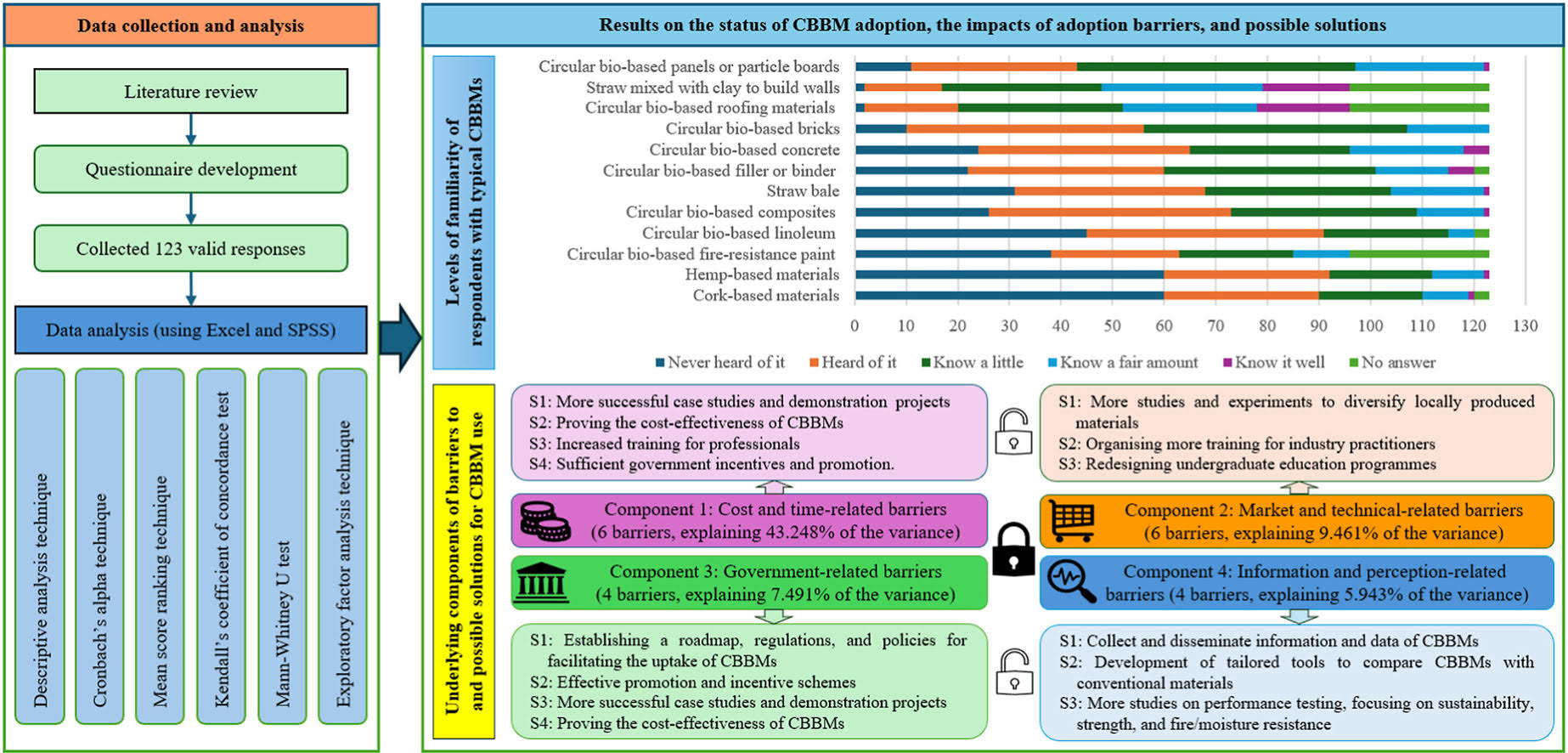We interviewed Dinh Linh Le, author of Circular bioeconomy in the Global South: The case of circular bio-based building material use in Vietnam, to understand how bio-based building materials can reduce indoor temperatures (by up to 3°C compared to traditional masonry houses). There are some hurdles though: the lack of knowledge and the lack of local cultivation of certain plants.

The study “Circular bioeconomy in the Global South: The case of circular bio-based building material use in Vietnam” concluded that the integration of circular bio-based building materials (CBBMs) represents a promising strategy to mitigate climate impact and the high dependence on non-renewable natural resources of the building sector. However, the widespread adoption of these materials is still hindered by various barriers.
In addition to mitigating environmental impacts, CBBMs can serve as an effective tool for climate adaptation, particularly in terms of building insulation. Due to their thermal regulation properties, CBBMs such as straw, agricultural fibers, cork, and hemp-based materials can help reduce indoor temperatures by providing better insulation.
CBBMs “can also contribute to adaptability because using these materials can offer very, I mean, excellent insulation properties. When we renovate the existing buildings with circular bio-based building materials, or when we build the new buildings using these materials, we can keep the temperature inside the building, we can ensure the environment inside and we can reduce energy consumption for heating and cooling,” said Dinh Linh Le, author of the research, in an interview with climateadapatation.life.
“For example, a study by Iwaro and Mwasha (2019), published in the Journal of Architectural Engineering, found that using circular bio-based insulation materials made from coconut by-products can reduce indoor temperatures by up to 3°C compared to traditional masonry houses,” explained the author.
These bio-based materials not only enhance the energy efficiency of buildings but also reduce the need for artificial cooling, thus lowering energy consumption. “For instance, a study by Barreca et al. (2019) titled Innovative use of giant reed and cork residues for panels of buildings in the Mediterranean area found that houses with agglomerated cork walls and giant reed walls can reduce energy consumption by over 75% and 56%, respectively, compared to traditional brick wall constructions,” told Dinh Linh Le.
By improving the thermal comfort within buildings, CBBMs help mitigate the effects of extreme heat. As a result, these materials play a key role in protecting buildings and their occupants from the impacts of rising temperatures, contributing to more climate-resilient and sustainable urban environments.
CBBMs offer significant potential to reduce the construction industry’s dependence on non-renewable resources and lower greenhouse gas (GHG) emissions.
“A literature review of 97 studies conducted by Le et al. (2023) on the sustainability of CBBMs found that nearly all CBBMs exhibit GHG emissions compared to conventional construction materials. A compelling example is provided by Göswein et al. (2021), who demonstrated that using materials derived from invasive alien plant species as alternative resources for concrete at the urban scale offers significant potential for achieving a near carbon-neutral building stock, with a carbon capture capacity of up to 897 kg CO₂-equivalent per cubic meter,” said Dinh Linh Le.
This approach, according to the research, is especially relevant in Vietnam due to the country’s high vulnerability to climate-related risks. National policy frameworks that promote green growth increasingly support the use of recycled and sustainable materials in construction, creating favorable conditions for the diffusion of CBBMs.
“Despite this policy support, actual adoption remains limited. A review of both domestic and international sources reveals a lack of application and public discussion, highlighting the need to raise awareness and build capacity. Government-related issues – such as the absence of specific regulations, lack of financial incentives, and limited technical guidance – are identified as the most critical barriers,” said Dinh Linh Le.
Construction professionals consistently recognize these challenges, regardless of their direct experience with CBBMs. Comparative analysis with developed economies also reveals distinct adoption challenges in Vietnam, underlining the need for context-specific strategies in the Global South. Cost- and policy-related barriers are the most dominant, emphasizing the essential role of government in enabling market transformation.
In the context of CBBMs, cork- and hemp-based materials are among Vietnam’s least familiar to building professionals. Nearly half of the respondents in the presented study indicated that they had never heard of these materials. This is largely because cork and hemp are not native to Vietnam, and their adoption in the local market could be hindered by the need for long-distance transportation. Such transportation would result in a higher embodied carbon, thereby undermining the sustainability benefits of these materials in mitigating climate change. Therefore, although there is potential to scale up the market for CBBMs in Vietnam in the coming years, significant challenges must be addressed to achieve this goal.
Background
As in many countries across the Global South, Vietnam’s growth is accompanied by increasing volumes of agricultural residues and organic waste, often poorly managed through open burning or dumping.
This mismanagement results in environmental degradation and squanders valuable resources that could otherwise be transformed into climate-friendly building materials. Converting these by-products into CBBMs – such as straw-based panels, circular bio-based composites, etc. – offers an opportunity to address waste management and emissions reduction challenges. These innovations can help shift the construction industry toward more climate-resilient and resource-efficient practices, with potential applicability across other countries in the Global South sharing similar environmental and socioeconomic conditions.
Methodology
The study follows a three-stage research methodology: data collection, data analysis, and results reporting. Dinh Linh Le gathered data through a structured questionnaire distributed to professionals in the construction and environmental sectors across Vietnam, a country selected as a representative example of the Global South. Respondents assessed their familiarity with various types of CBBMs and shared insights on perceived adoption barriers.
The respondents included 30 architects, 27 engineers, 26 researchers from research institutions or universities, 16 housing developers, 11 green building development consultants, seven material producers, and six professionals working for construction industry authorities. Nearly 90% of respondents have at least five years of experience in the construction industry, which suggests they can provide valuable insights for the research. Dinh Linh Le collected the responses from February 2023 to February 2024.
The analysis combined ranking techniques with exploratory factor analysis (EFA) to group barriers into core categories and identify their relative significance. The study also compared the top-ranked barriers in Vietnam with those in selected developed economies to highlight contextual differences.
